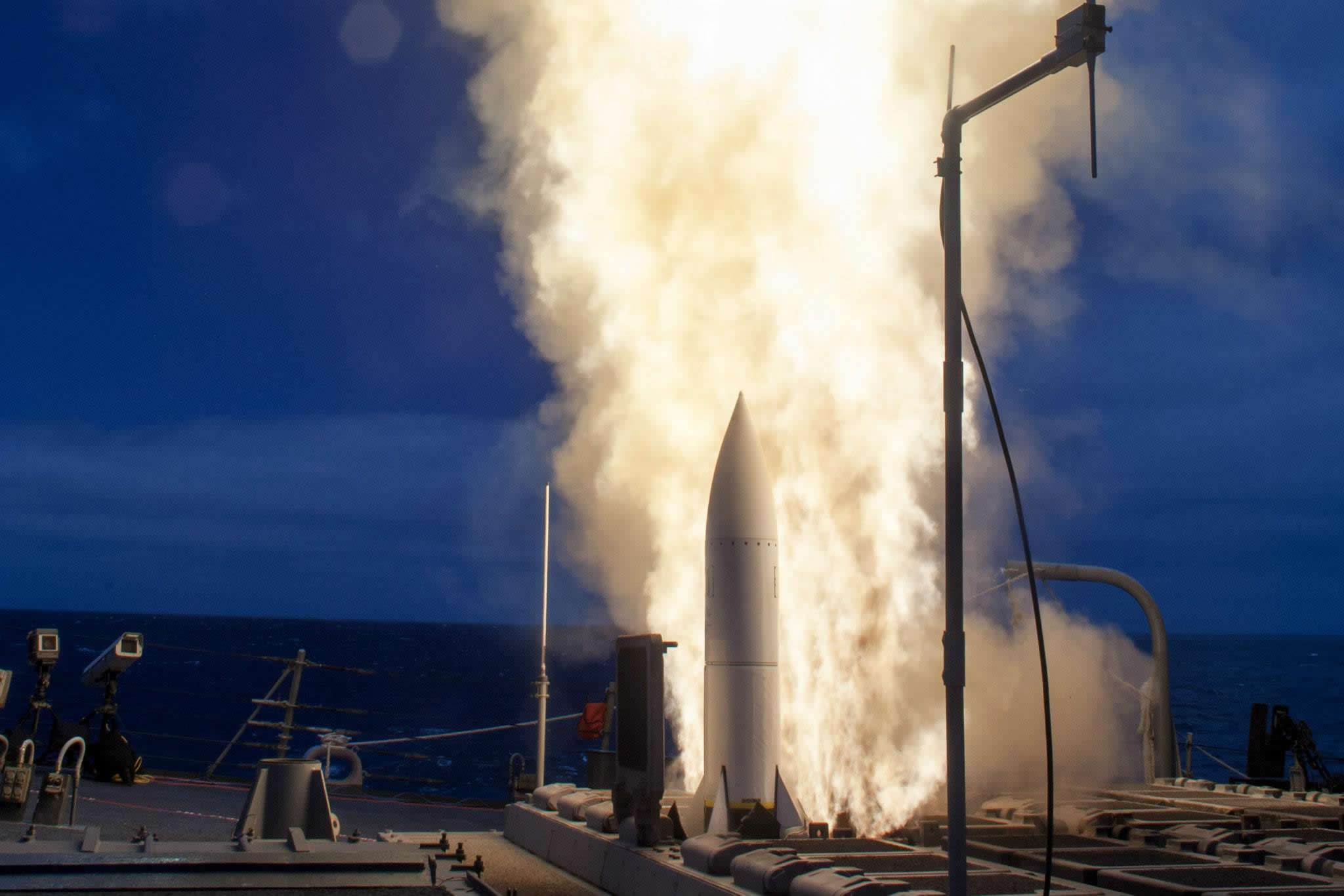SM-6 air defense interceptor proves surface-to-surface engagement capability
PACIFIC MISSILE RANGE FACILITY, Hawaii: Raytheon Company’s Standard Missile-6 (SM-6) successfully engaged a surface target — the decommissioned USS Reuben James (FFG 57) — in a recent flight test. The test was a demonstration of the U.S. Navy’s concept of “distributed lethality,” employing ships in dispersed formations to increase the offensive might of the surface force and enabling future options for the joint force commander. The USS John Paul Jones fired the SM-6 during the test; another Air Defense Arleigh Burke Class Destroyer was on station as the assist ship.
The mission validated that the legacy Anti-Surface Warfare (ASUW) capability of the Standard Missile-2 family of missiles and the MK7 Aegis Weapon System (AWS) has successfully carried over to SM-6 and the latest Aegis Destroyer baseline 9. The investment in the Standard Missile family resulted in an affordable SM-6 effector that continues to perform beyond expectations.
“This test event demonstrated Raytheon’s decades of continued technological development and partnership with the U.S. Navy,” said Dr. Taylor Lawrence, Raytheon Missile Systems president. “The ability to leverage the Standard Missile Family and the legacy AWS in newly fielded systems brings additional warfighting capability to the U.S. Fleet.”
In recent testing, SM-6 has shown expanded mission capability in three key areas: Anti-Air Warfare, Sea-Based Terminal and Anti-Surface Warfare. The tri-mission capability of SM-6 continues to emphasize its value by providing additional capability beyond its original intended mission.
Raytheon has delivered more than 250 SM-6 missiles, which were deployed for the first time in 2013. The missile’s final assembly takes place at Raytheon’s state-of-the-art SM-6 and SM-3 all-up-round production facility at Redstone Arsenal in Huntsville, Ala.
About the Standard Missile-6
SM-6 delivers a proven, over-the-horizon, air defense capability based on the time-tested advantages of the Standard Missile’s airframe and propulsion.
•The SM-6 uses both active and semi-active guidance modes and advanced fuzing techniques.
•It incorporates the advanced signal processing and guidance control capabilities of Raytheon’s Advanced Medium-Range Air-to-Air Missile.
•SM-6 delivers multi-mission capability for long-range Fleet Air Defense and Sea-Based Terminal Defense.










